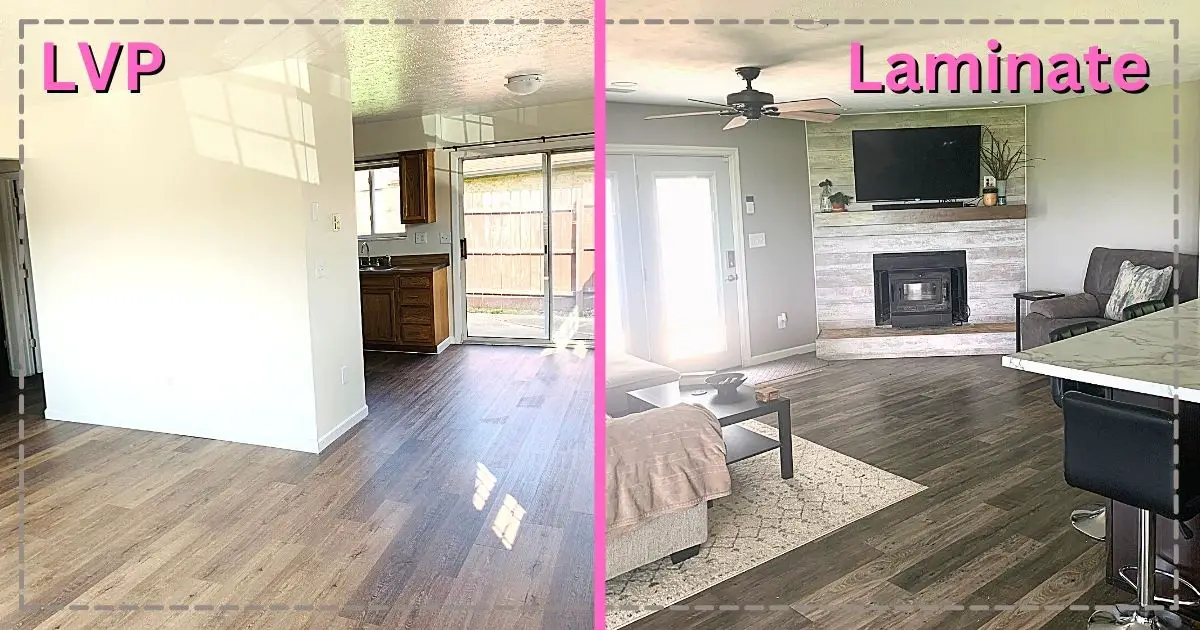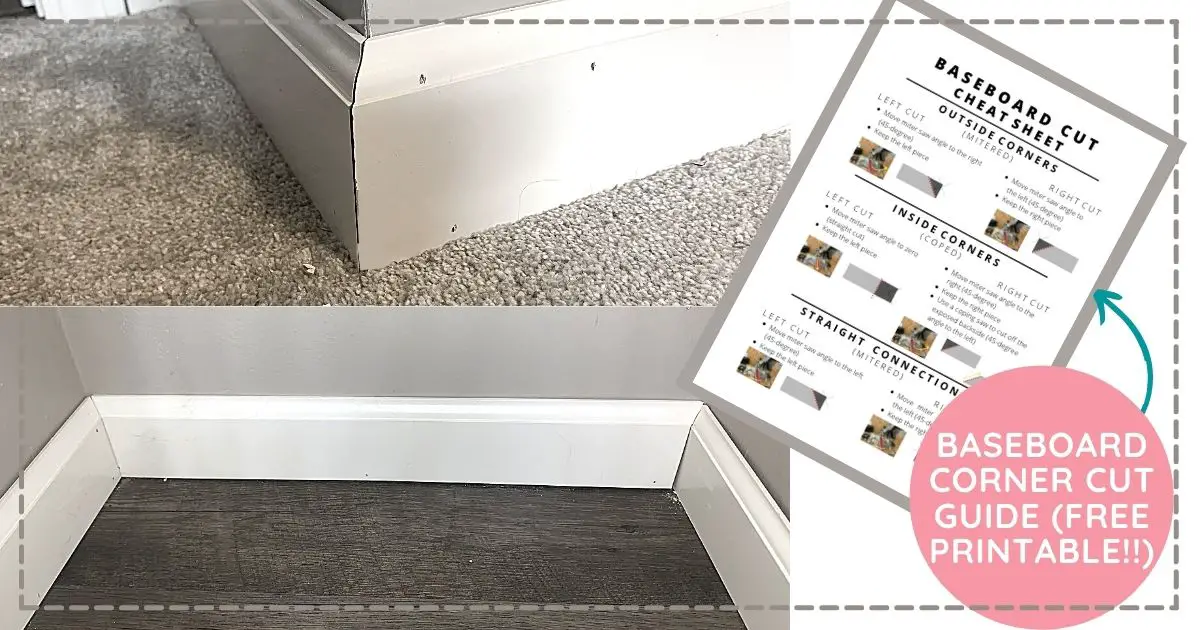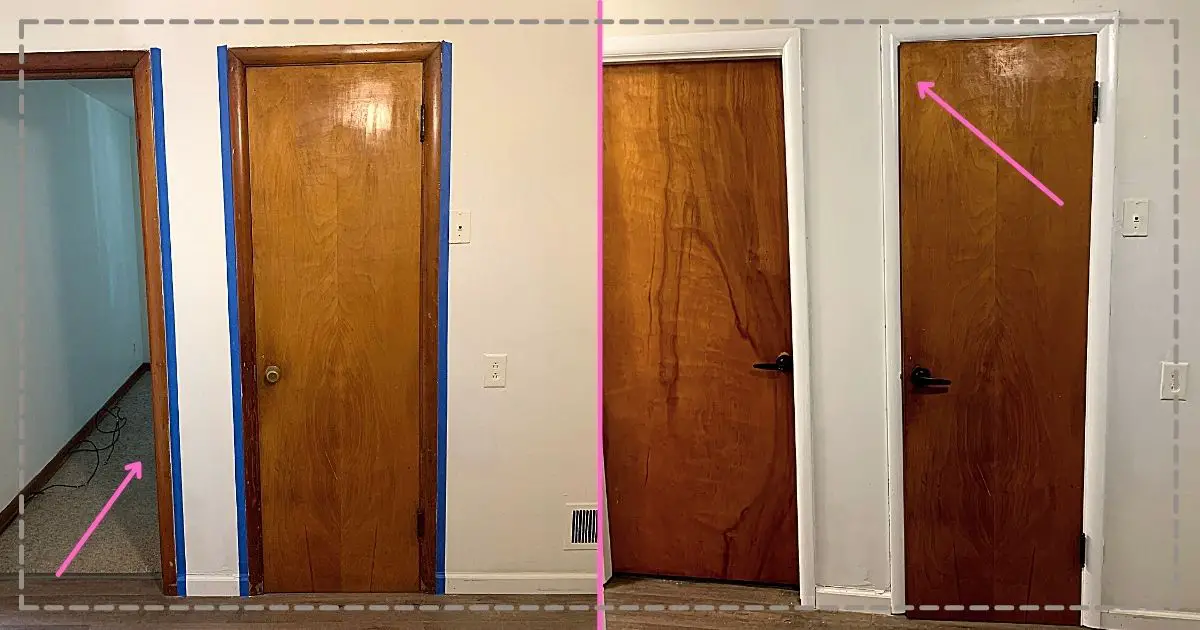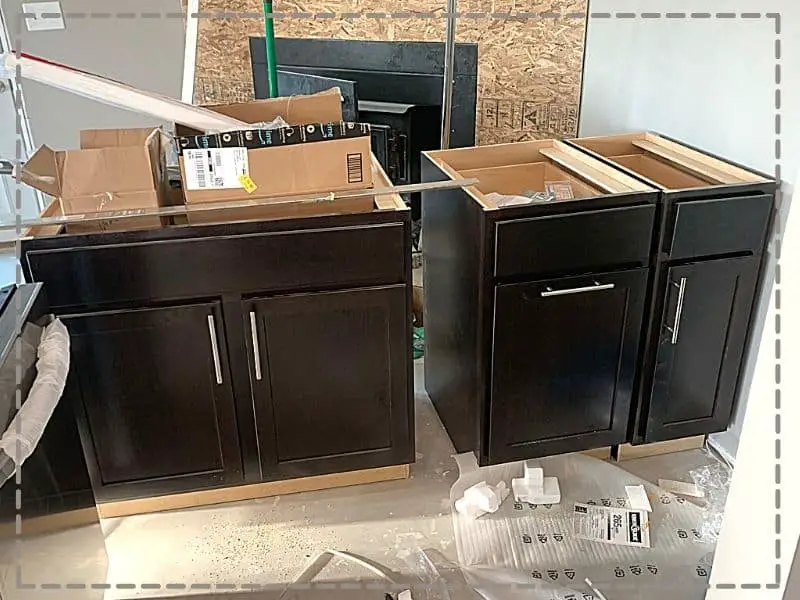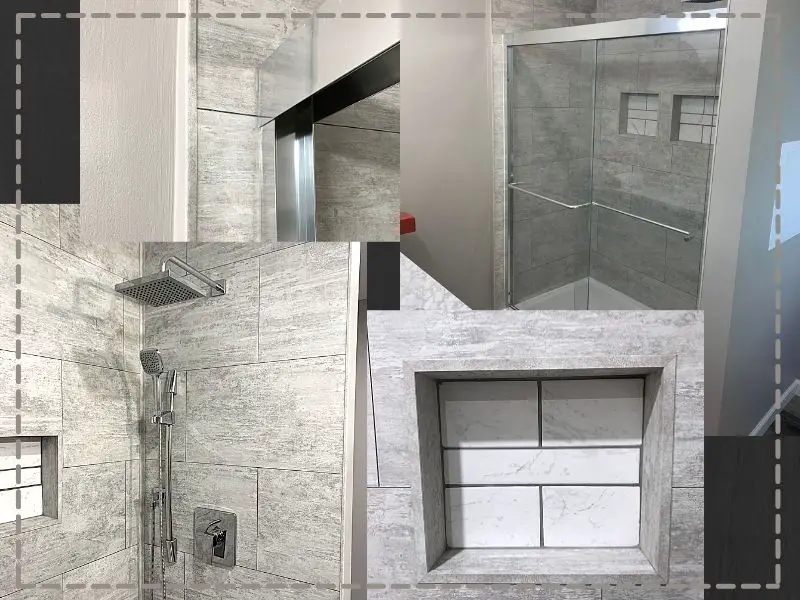*My posts may contain affiliate links, which means I may receive a small commission, at no cost to you, if you make a purchase through a link! Thank you for supporting my website!*
Last updated on March 16th, 2024 at 12:06 pm
Wondering if laminate flooring or luxury vinyl plank flooring is better? Well, look no further because I have your answer!
Both laminate flooring and luxury vinyl plank flooring (LVP) are durable, easy to install, can be waterproof, add resale value to your home, and can last 10-25 years. Overall, laminate flooring is better than LVP because it’s softer to walk on, cheaper to purchase, and bridges uneven subfloors better.
Now that we’ve got the basics out of the way, let’s break into the details further so you can easily choose the best plank flooring for your home.
Let’s dive in!
Quick Navigation: Luxury Vinyl Plank Compared To Laminate Flooring
- Is LVP Or Laminate More Durable/Scratch-Resistant/Dent-Resistant/Stain-Resistant?
- Is LVP Or Laminate More Waterproof?
- Is LVP Or Laminate Softer To Walk On?
- Is LVP Or Laminate Easier To Install?
- Is LVP Or Laminate More Expensive?
- Does LVP Or Laminate Last Longer?
- Does LVP Or Laminate Add More Resale Value To A Home?
- Does LVP Or Laminate Bridge Uneven Floors Better?
- Overall Winner: Laminate Vs LVP
- Other FAQs About LVP Vs Laminate
- Final Thoughts
Is LVP Or Laminate More Durable/Scratch-Resistant/Dent-Resistant/Stain-Resistant?
LVP is more durable/dent-resistant than laminate flooring because of how thin it is. LVP does not have a soft inner layer, so it can handle drops and scratches better than laminate.
Although LVP is a little more durable, laminate flooring is also scratch- and dent-resistant compared to other types of flooring.
The top layer of laminate is scratch resistant, but the inner layers can easily be scratched and damaged if they are ever exposed.
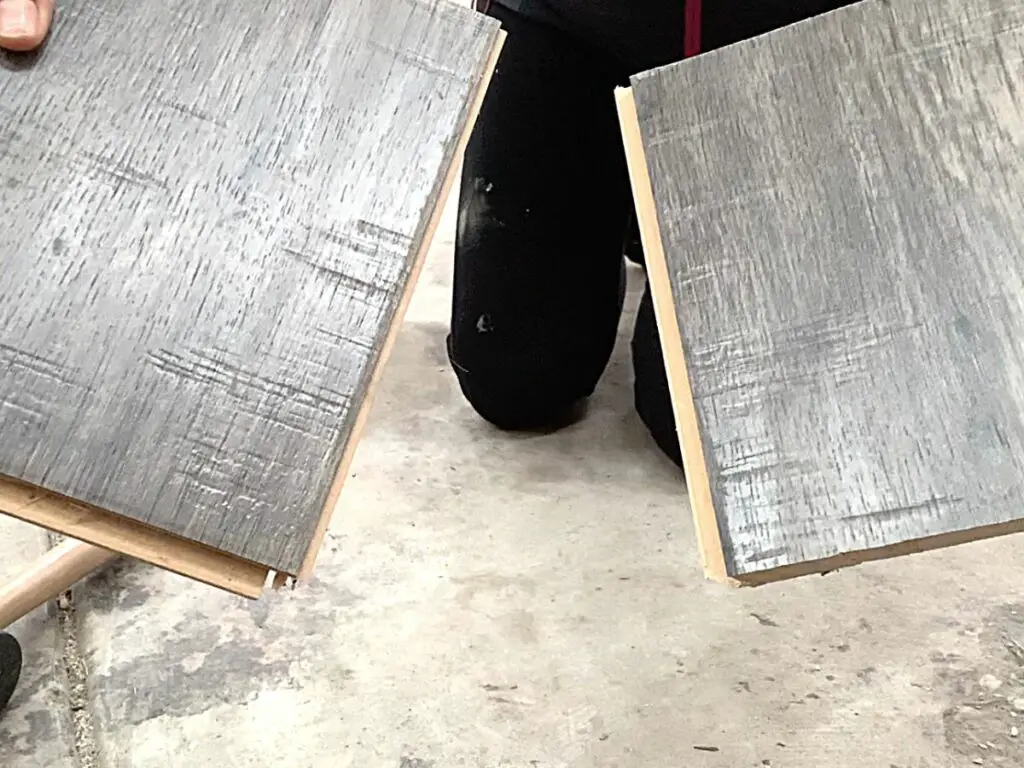
Also, for the everyday drops of your phone or shoes or other relatively soft items, laminate flooring is pretty dent-resistant. It also can handle dancing, jumping, and regular impact with ease.
(I participate in an online dance workout class every week and there are no signs of wear and tear from me spinning and sliding my feet.)
However, if you drop something sharp and/or heavy, then it dents fairly easily. And once that top layer is removed, it exposes that softer inner layer that is unsightly and can allow further damage to occur.
Unfortunately, we found this out the hard way by dropping a sharp piece of our treadmill while we were carrying it in. I’ve also dropped the corner of my laptop (which has sharp edges) and it dented and chipped a part of the laminate as well.
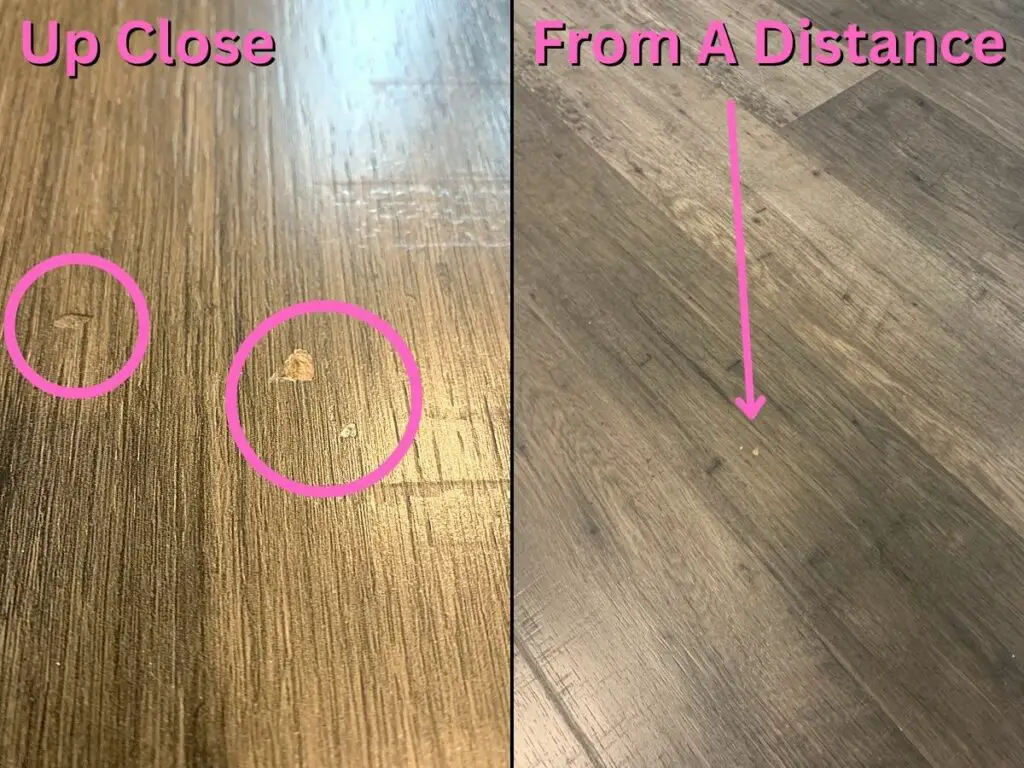
LVP, on the other hand, is much thinner. It doesn’t have that inner layer, so there really isn’t anything to dent. If you drop something heavy and sharp enough, then you can scratch it as well. But it would take significantly more force than the laminate flooring to see similar damages.
LVP also usually has a thicker wear layer (12 mm for residential to 30 mm for commercial) than laminate flooring which helps make it durable.
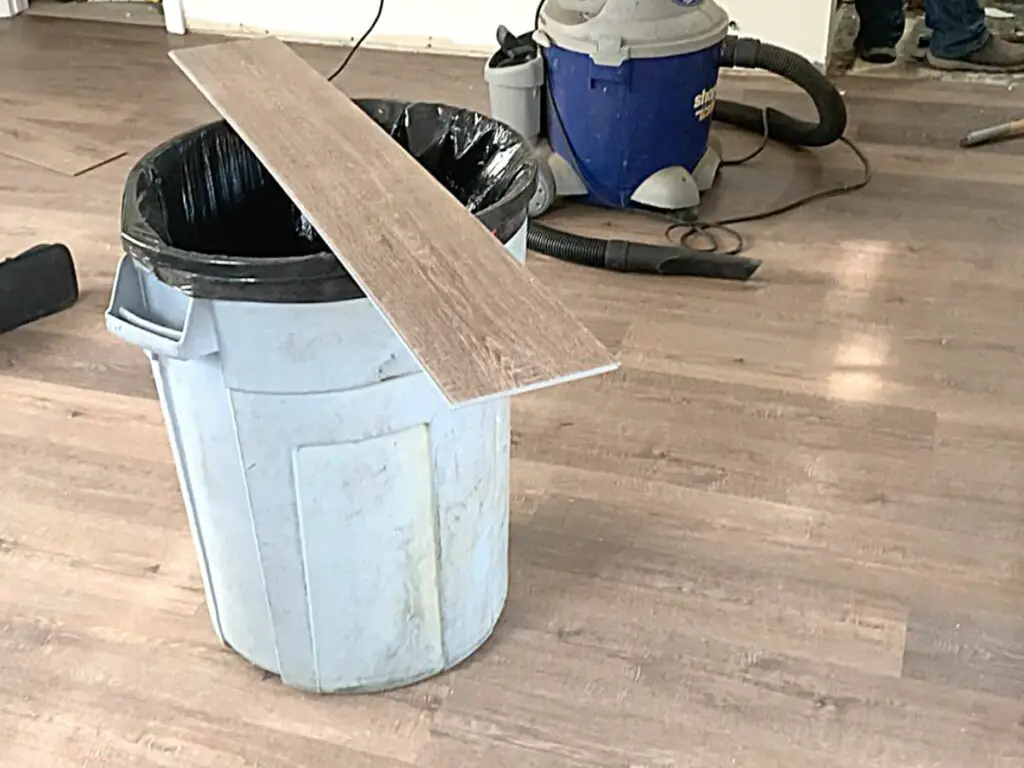
Because of this, we love to use LVP in our rental properties. It stands up to the everyday wear and tear of tenants, their children, and their pets. I feel like the laminate flooring would not be durable enough to last for decades if you aren’t going to be careful while moving things on it.
(If you own some rental properties and want to learn how to manage them better with less time and headache, check out my other blog, DIY Rental Manager.)
Durability Winner: Luxury Vinyl Plank Flooring
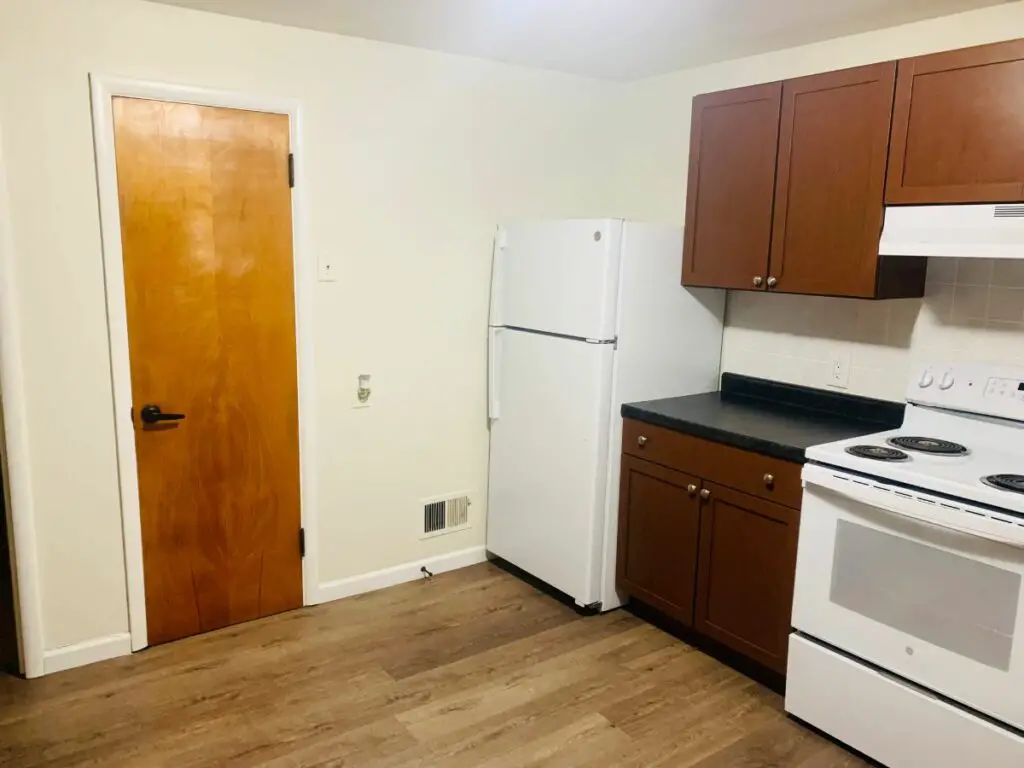
Is LVP Or Laminate More Waterproof?
LVP is 100% waterproof while most laminate floorings are only water-resistant. Laminate flooring is supposed to be restricted to light traffic and low moisture areas in your home while LVP can be used in any room throughout your home.
For example, your living room, bedrooms, kitchen, entryway, laundry room, and hallway would be good applications for laminate flooring.
Laminate flooring can be used in bathrooms, but you do have to be careful with how much water is exposed to the laminate over time because it is not waterproof (only water-resistant).
If any water that spills stays on the top layer of the laminate and gets wiped up within 30 minutes, then laminate flooring is great to use in the bathroom. However, if the edge of the laminate flooring isn’t properly caulked near the wet areas or if water gets underneath it, then some water damage can occur.
If you want more information on how much water laminate flooring can take, check out my other article here. It’s a decent amount of water, but not as much as LVP can take.
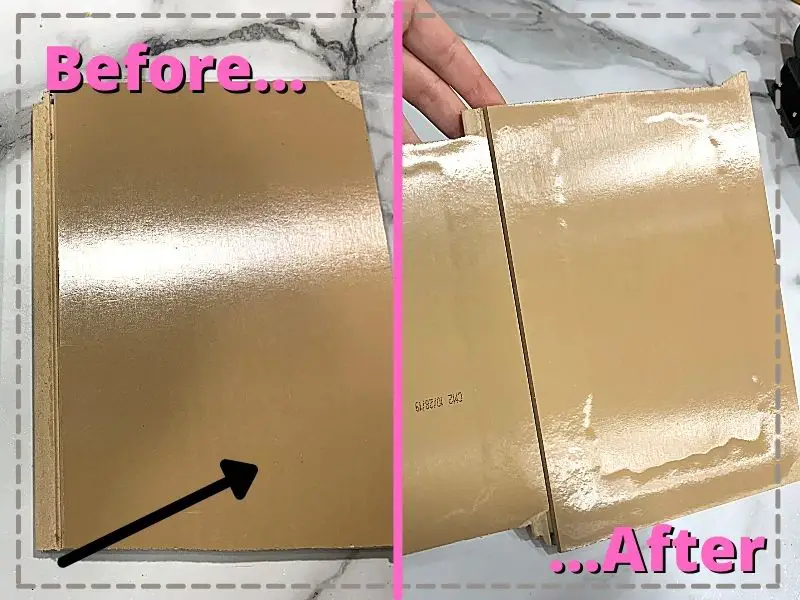
On the other hand, LVP is 100% waterproof. Because it doesn’t have the inner layers that laminate has, there’s nothing that can soak up any water. That makes LVP a great flooring to use in any room of your home, including bathrooms and basements that sometimes see water.
The other reason we chose to use LVP in our rentals instead of laminate is that LVP is waterproof and it doesn’t matter if a tenant isn’t paying attention to the care of it. In our personal home though, we are aware of how to maintain the water-resistant laminate flooring, so we aren’t worried about any water damage.
There are some laminate floorings that are 100% waterproof which would make it an excellent candidate for all of your rooms as well. If the waterproof feature is important to you, then make sure to shop for laminate and LVP that are 100% waterproof.
Since you can purchase both floorings with a 100% waterproof feature, they tie in the waterproofing category.
Waterproof Winner: Tied
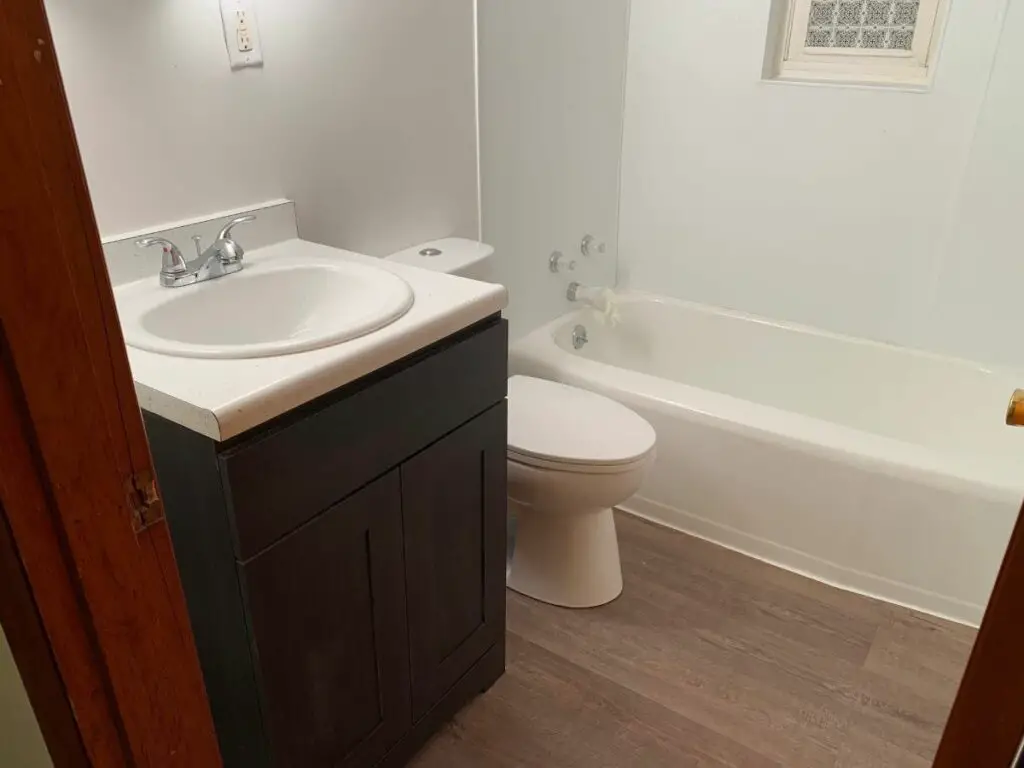
Is LVP Or Laminate Softer To Walk On?
Laminate flooring is significantly softer to walk on than LVP because it is thicker and you can add a thicker underlayment pad to add to the softness.
Most LVP floorings come with built-in underlayment padding, which is great from a cot-savings standpoint, but not great from a softness standpoint. That built-in pad is much thinner than some of the underlayment padding you can purchase separately.
If you are installing new flooring on concrete, then you want to consider the softness. Concrete is hard on the joints, so having thicker flooring such as laminate flooring with a thicker underlayment pad will help protect your body for years to come.
If you need help choosing an underlayment pad for your laminate flooring, then check out my other post here.
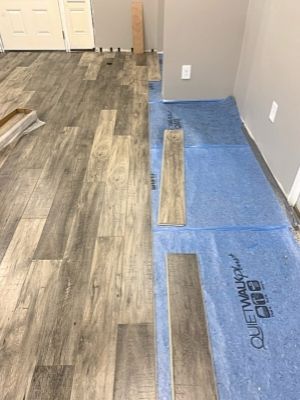
On the other hand, laminate flooring can be purchased with a 10 mm thickness on top of the thickness of a quality underlayment pad. That soft inner layer in laminate is what gives the boards this softness.
That extra thickness will make walking, sitting, and playing on the floor feel better than what the thinner LVP boards would feel on concrete.
The thickness also helps if you have a wood subfloor. But wood subfloors are already softer by nature, so this feature is not as important unless you have known joint pains from extended time walking on harder surfaces.
Softness Winner: Laminate Flooring
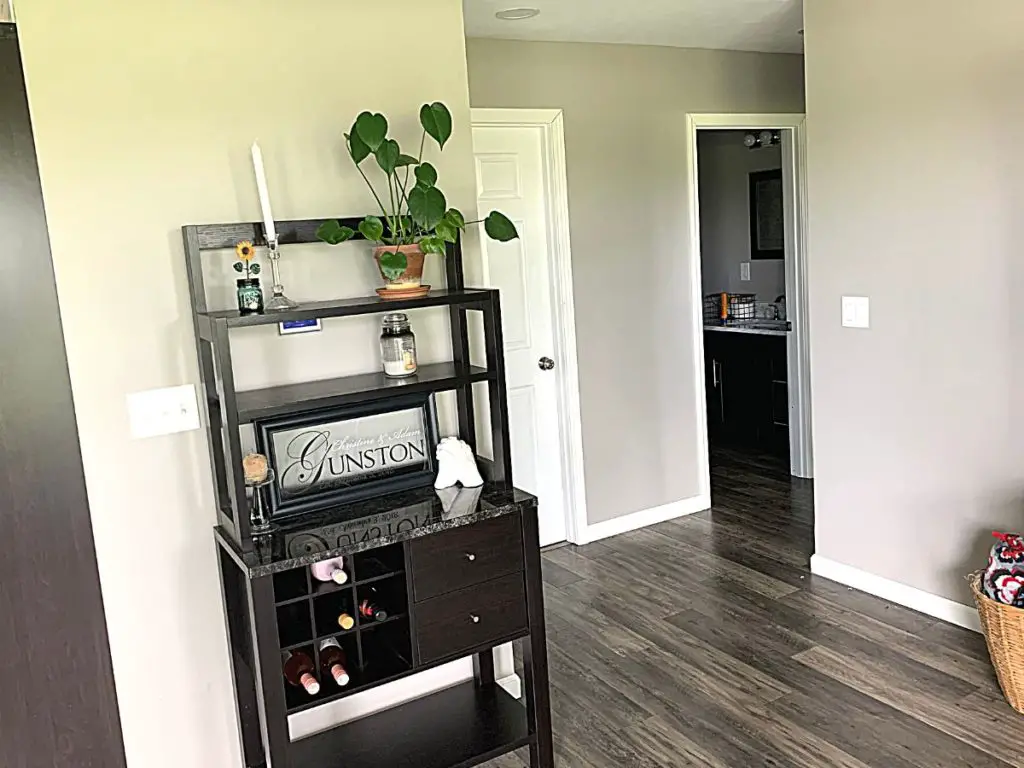
Is LVP Or Laminate Easier To Install?
Both laminate flooring and LVP are easy to install with this flooring installation kit found at Amazon and a rubber mallet. They both are floating floors that easily snap together and stay in place for decades.
The easy installation process is what attracts most DIYers to both of these floorings.
The installation process is similar on both floors. Slide the tongue and groove together and tap the boards in place with a rubber mallet and the blocks that come with the installation kit listed above.
Both floorings can also be cut with standard power tools such as circular saws, table saws, miter saws, and jigsaws.
If you’ve never installed plank flooring before, then there is a learning curve in the beginning, but you will pick it up fairly quickly. To help you figure out what to do if your laminate flooring won’t snap together, check out my tutorial here.
Installation Winner: Tied
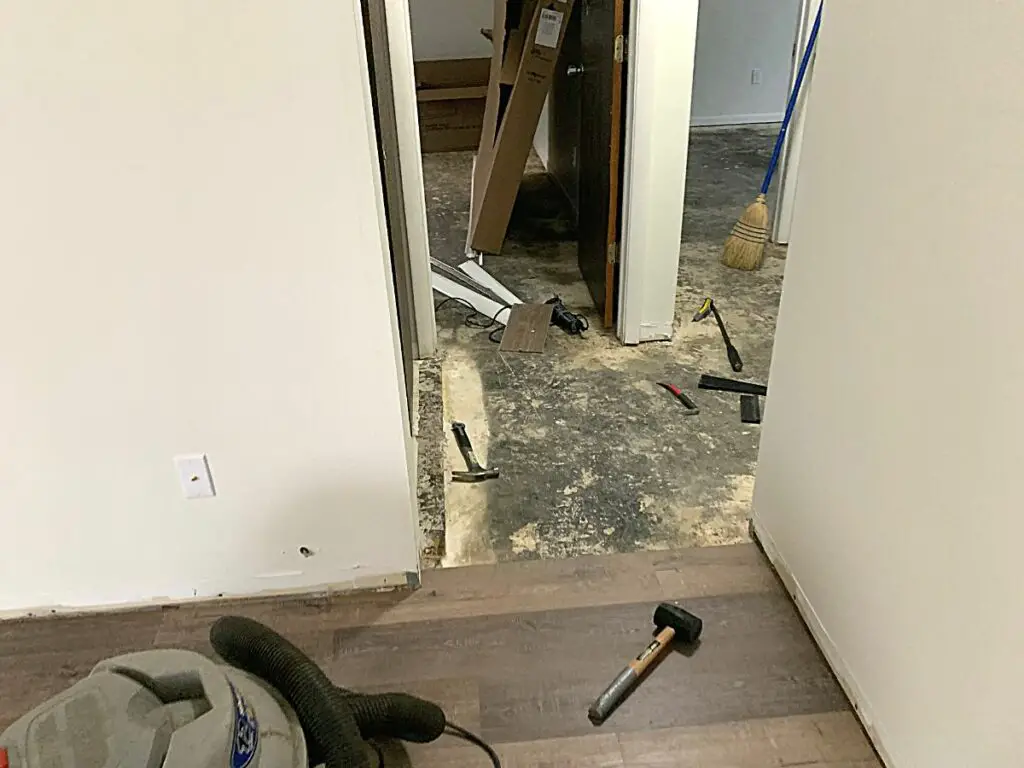
Is LVP Or Laminate More Expensive?
Laminate flooring is cheaper than LVP. Laminate flooring ranges from $1.54-$2.84 per square foot and some brands come with attached pads while some come without. LVP ranges from $1.99-$4.49 per square foot and all brands come with attached pads.

If you choose a laminate flooring brand without an attached pad, then you also have to factor in an extra $0.25-$0.49 per square foot for the additional underlayment pad you will need.
Even with the extra cost of the padding, most laminate floors are still cheaper per square foot than LVP. And since both products are durable, can be waterproof, and easy to install PLUS laminate flooring is softer to walk on, it’s a clear winner for laminate flooring.
Cheaper Winner: Laminate Flooring

Does LVP Or Laminate Last Longer?
High-quality LVP and laminate flooring are both expected to last 15-25 years if maintained properly while low-quality LVP and laminate flooring are only expected to last 10 years. Both floorings are great durable, long-term options for your home.
To choose a high-quality laminate flooring or luxury vinyl plank flooring, choose one that is waterproof, scratch-, dent-, and stain-resistant, and has a wear layer thickness of 10 mm minimum (the higher the better).
For LVP, choose a brand with an overall thickness of at least 5 mm and for laminate, choose a brand with an overall thickness of at least 10 mm.
Also, both floorings will last decades if they are maintained properly (i.e. spilled water wiped up immediately, cleaned frequently, items not dragged across it or dropped on it often, installed properly, etc.).
Because you can get both types of flooring which can last for decades, they tie in the longevity department.
Last Longer Winner: Tied
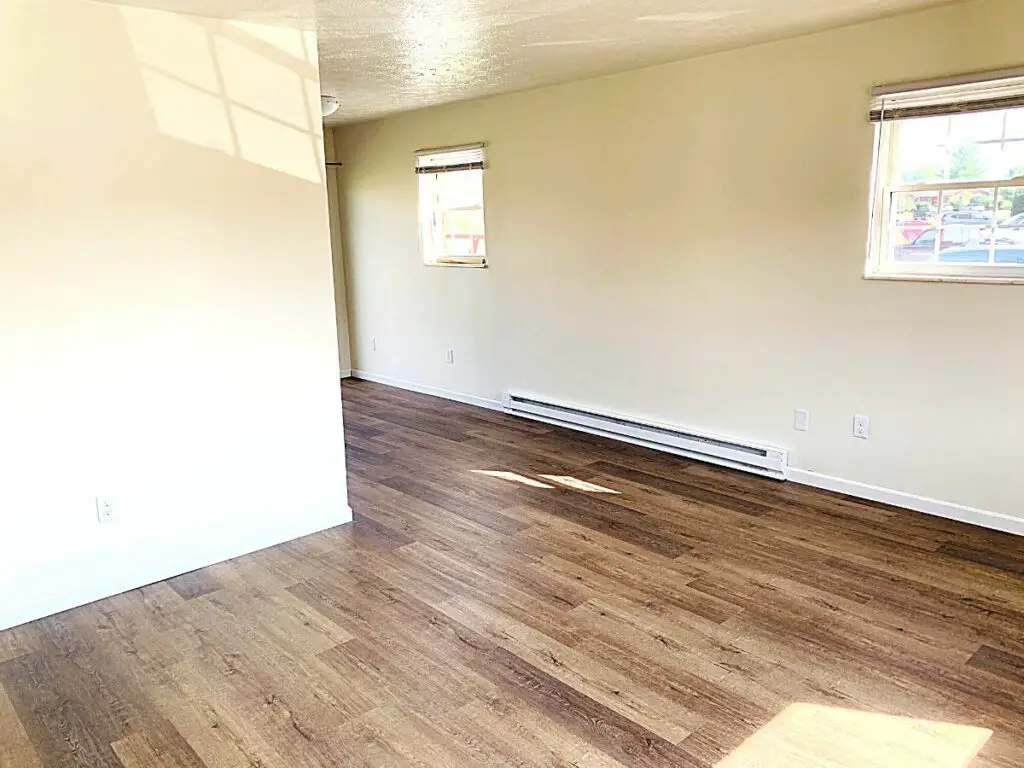
Does LVP Or Laminate Add More Resale Value To A Home?
Both LVP and laminate flooring will add resale value to a home over carpet or other types of flooring because they are easier to clean and maintain and look more high-end.
Also, since both floorings are simple to install and can be done even by a beginner DIYer, they can both add significant value to your home compared to the cost.
Because they are both easy to install, durable, and give a high-end look, they tie in the resale value department.
Add More Resale Value Winner: Tied
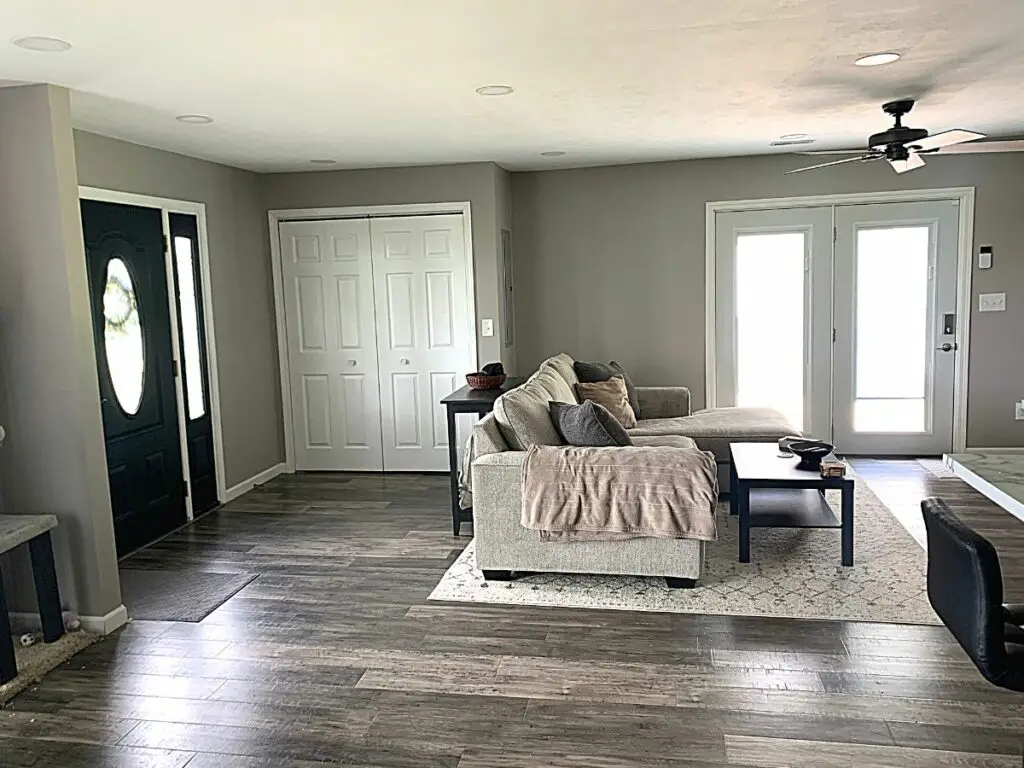
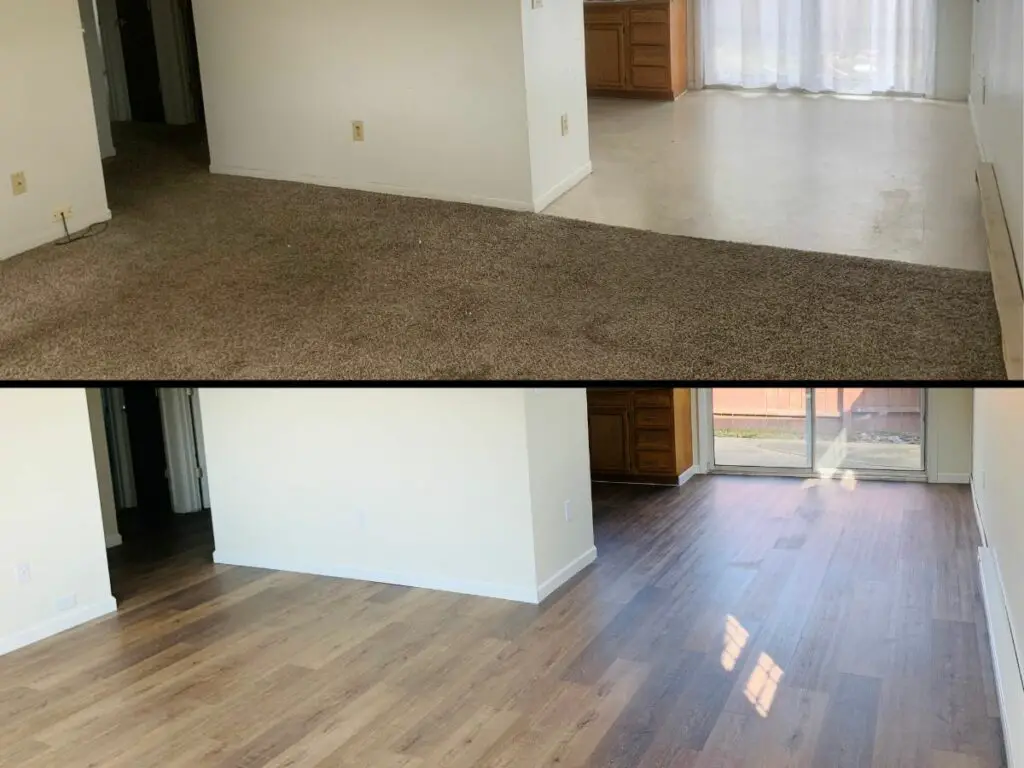
Does LVP Or Laminate Bridge Uneven Floors Better?
Laminate flooring is thicker than LVP so it bridges small unevenness in subfloors better. Though both floorings will have issues over time if the subfloor is more than 1/4 inch thick in unevenness.
After installing both LVP and laminate flooring, we’ve found that laminate flooring locks together and stays together a little bit better than LVP just because it’s thicker. That extra thickness helps the boards bridge any unevenness in the floors better, so the boards stay in place better.
When the subfloor isn’t perfectly level and sturdy, the LVP can unlock and start to lift wherever there’s a soft spot on the floor. In one of our rentals, the contractors installed the LVP poorly and after only a year, the flooring is lifting in all of the soft spots in the room.
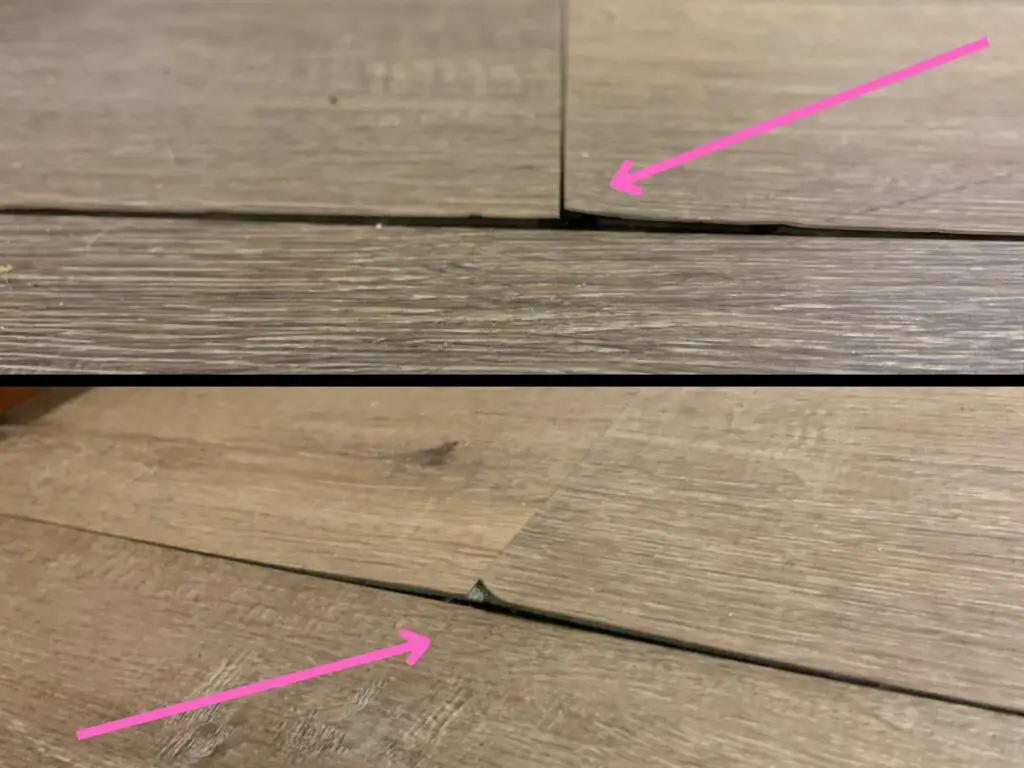
In our personal home, we also had some spots that were not level and therefore cause a soft spot in the floor. However, the flooring has never separated or lifted even though these soft spots have been walked on for over 2 years.
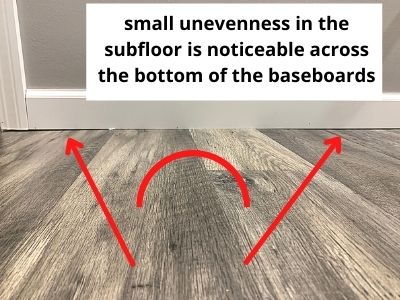
So, if you have a subfloor that has some unevenness that you can’t perfectly smooth out, then I highly recommend choosing laminate flooring that is 10 mm thick. That will help mitigate many problems that an unlevel subfloor can cause with LVP.
Bridges Uneven Subfloors Winner: Laminate Flooring
Overall Winner: Laminate Vs LVP
Overall, laminate flooring is better than luxury vinyl plank flooring because it is softer to walk on, cheaper to purchase, and bridges gaps in uneven subfloors better. Though both floors are excellent for durability, longevity, waterproofing, easy installation, and added home value.
Overall Winner: Laminate Flooring
Over the years, we’ve installed both laminate flooring and luxury vinyl plank flooring within our rental properties and throughout our personal home. Each type of flooring has pros and cons, but overall, we’ve been extremely happy with the use of both of them.
Here’s a quick summary of each category we covered and which flooring wins the category. If one of these features is more important to you and your intended use, then I highly recommend choosing that flooring. You really can’t go wrong with either plank flooring option.
| Category | Winner | Laminate Flooring | Luxury Vinyl Plank (LVP) |
|---|---|---|---|
| More Durable / Scratch-Resistant / Dent-Resistant / Stain-Resistant | LVP | 0 | 1 |
| More Waterproof | Tied | 1 | 1 |
| Softer To Walk On | Laminate | 1 | 0 |
| Easier To Install | Tied | 1 | 1 |
| Cheaper | Laminate | 1 | 0 |
| Lasts Longer | Tied | 1 | 1 |
| Adds More Resale Value To A Home | Tied | 1 | 1 |
| Bridges Uneven Floors Better | Laminate | 1 | 0 |
| Overall Winner | Laminate | 7 | 5 |
Other FAQs About LVP vs Laminate
Here are some other frequently asked questions about the differences between LVP and laminate boards to help you choose the best type of flooring for your home.
Which Is Better For Dogs LVP Or Laminate?
LVP is better for dogs because it has a thicker wear layer making it more scratch-, dent-, and stain-resistant. Plus, it will not soak up any urine like some laminate floors might.
How Do I Know If My LVP Is Good Quality?
Luxury vinyl plank flooring (LVP) is good quality if it has a wear layer of 12 mm minimum, is 100% waterproof, has an attached pad, and has an overall thickness of 5 mm minimum.
What Laminate Thickness Is Best?
The best laminate thickness is 10 mm or thicker. This thickness is softer to walk on, bridges gaps in uneven subfloors better, and is more durable than thinner laminate floorings.
Final Thoughts On LVP Vs Laminate
There you have it!
You really can’t go wrong with either LVP or laminate flooring because they are both fantastic flooring options.
Just think about what features you need for your chosen application and look for a brand that is cost-effective and has all of the features you need. You’ll be happy with either option you choose!
Hopefully, you found this guide helpful.
Catch you in my next post!
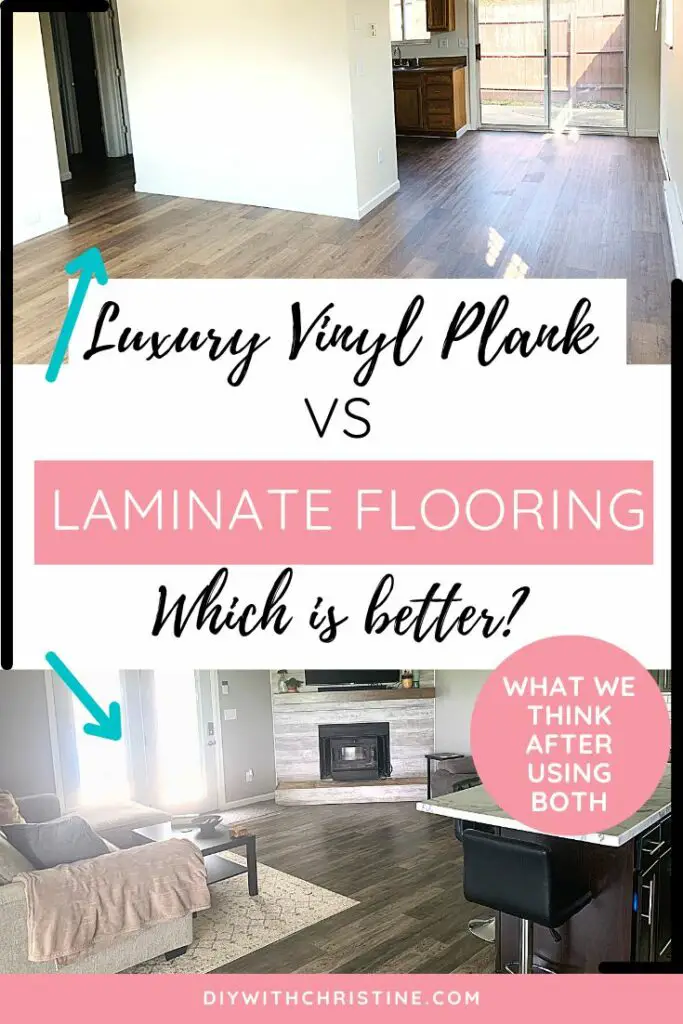

By Christine
Christine is a blogger and DIYer who tackles home renovation and decorating projects alongside her husband, Adam, for their personal residence and rental properties. Although she successfully tackles large renovation projects to avoid expensive contractor fees and bring her vision to life now, her path to success was not easy.
Go here to read her story, “From a Clueless First-Time Homebuyer To A Confident DIYer Creating Her Dream Home One Project At A Time“.
Popular Posts
DIY With Christine is a participant in the Amazon Services LLC Associates Program, an affiliate advertising program designed to provide a means for sites to earn advertising fees by advertising and linking to Amazon.com.

